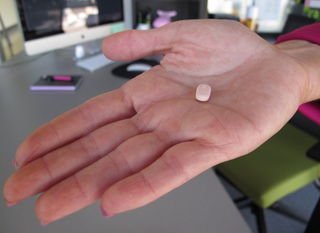Gender
The FDA, the DSM, Gender Equality, and “Female Viagra”
Will the FDA succumb to lobbyists accusing it of gender bias?
Posted June 8, 2015

“Drug for low sexual desire carries significant harms, FDA advisers find.” It’s the title of a news article the British Medical Journal published in July 2010, after a committee of advisers to the U.S. Food and Drug Administration voted unanimously to reject an application to approve flibanserin for low sexual desire in premenopausal women.
In June that year, Ray Moynihan reported, “an eleven-member advisory committee found that flibanserin’s manufacturer, [then] Boehringer Ingelheim, had failed to show overall efficacy for its drug.” “Nearly 15% of women taking flibanserin 100 mg discontinu[ed] the trials because of adverse events," he noted from FDA documents subsequently released, which pointed to significant increases in depression, accidental injury, and syncope or fainting (BMJ 2010;340:c3339).
The FDA rejected the drug later that year—and again in 2013—when a different, smaller pharmaceutical company, Sprout Inc., bought the rights to produce and market it and again presented it for FDA approval.
Cut to last Thursday, when medical headlines around the country reported the possibility of FDA approval for a “female” or “pink” Viagra. “The first ‘female Viagra’ came one step closer to coming to market,” Brigid Schulte wrote in the Washington Post, “as a key advisory committee to the Food and Drug Administration voted Thursday afternoon to recommend that the FDA approve the drug with conditions.”
The committee had voted 18-6, in a surprise reversal, to recommend that the organization now approve flibanserin as capable of treating low sexual desire in women. The decision was made even after the APA agreed to drop “Hypoactive Sexual Desire Disorder” in women from DSM-5 after controversy about its validity and setting—the disorder's definition in the previous edition was sufficiently open-ended to include “lack of lust, when it creates emotional distress.” HSDD was subsequently turned into an Adjustment/Arousal Disorder for women; in men, it continues to be listed as a psychiatric condition.
“The FDA usually follows the recommendations of its advisory committees,” Schulte noted of last week’s decision about flibanserin, “but not always… The agency has already rejected the drug twice, saying the potential side effects of fainting, nausea, dizziness, sleepiness and low-blood pressure outweighed its benefits. Even on Thursday, the committee described the drug benefit as ‘moderate’ or ‘marginal.’”
So, what had happened in the interim to explain the advisory committee’s shift from unanimous rejection to an 18-6 vote in favor of the same medication?
The question is worth asking even if the FDA decides for a third time to turn down the drug. That's because the issue has come to involve influential and well-regarded health groups such as the National Council of Women’s Organizations, Jewish Women International and Nurse Practitioners in Women’s Health, which together have lent their support to a lobbying group called Even the Score. Joining the makers of flibanserin in stoking the need for female equivalents to Viagra, Cialis, and a host of competitors, Even the Score has taken to accusing the FDA of gender bias and of dragging its feet with approval because of apparent uninterest in women’s sexual health. “It’s time to level the playing field when it comes to the treatment of women’s sexual dysfunction,” the group asserts on its website. “There are 26 FDA approved drugs to treat various sexual dysfunctions for men, but still not a single one for women’s most common sexual complaint.”
There are, however, clear indications that the difficulty and delay is owing to medicine rather than politics or prejudice. Whereas existing drugs for men are designed to raise arousal by increasing blood flow, flibanserin is being marketed for its ability to alter brain chemistry—clearly a lot more radical, intrusive, and risky. The implication of this latest approach is that the best way to raise low sexual desire in women is by introducing medicine that acts on dopamine and serotonin receptors, in ways broadly comparable to SSRI antidepressants, with all of their problems (including widespread sexual dysfunction). The rapid default to medication as the best solution for women is troubling enough. Yet flibanserin was rejected in 2010 when presented to the FDA as an antidepressant.
Back in 2010, Moynihan reported from FDA documents, flibanserin failed to show significant improvement over placebo. As he subsequently discussed in an October 2014 podcast from the BMJ, too, in an interview called “Evening the Score on Sex Drugs: Feminist Movement or Marketing Masquerade?,” medical science and the marketing of medicalized sexual conditions have become so entangled as to make their distinction almost impossible. At the same time, given the heightened risk of targeting brain chemistry, it’s not just misleading to view the issues as equivalent for men and women; it’s highly risky in that the consequences for women’s health are potentially far greater, given the type of medication under review.
Susan Scanlan, chair of Even the Score, hailed the latest vote, exclaiming in a statement quoted in the New York Times, “Today, we write a new chapter in the fight for equity in sexual health.” Yet as the Times also noted, other women’s groups and individuals have criticized the lobbying group, accusing it of “a distasteful attempt to use women’s rights as a cover to get an undeserving drug approved.” “To approve this drug,” argued Dr Adriane Fugh-Berman of Georgetown University, would “set the worst kind of precedent—that companies that spend enough money can force the FDA to approve useless or dangerous drugs.”
Unfortunately, as we’ve seen from other examples in recent years, it wouldn’t be for the first time.
Update, Aug. 18, 2015: "FDA Approves Addyi [Flibanserin], a Libido Pill for Women" (New York Times).
christopherlane.org Follow me on Twitter @christophlane




